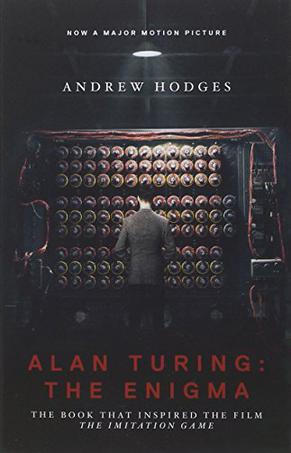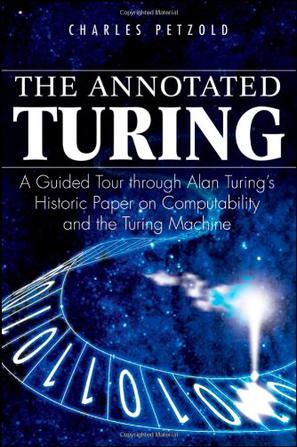欢迎来到相识电子书!
标签:turing
-
Alan Turing: The Enigma
It is only a slight exaggeration to say that the British mathematician Alan Turing (1912-1954) saved the Allies from the Nazis, invented the computer and artificial intelligence, and anticipated gay liberation by decades--all before his suicide at age forty-one. This New York Times-bestselling biography of the founder of computer science, with a new preface by the author that addresses Turing's royal pardon in 2013, is the definitive account of an extraordinary mind and life. Capturing both the inner and outer drama of Turing's life, Andrew Hodges tells how Turing's revolutionary idea of 1936--the concept of a universal machine--laid the foundation for the modern computer and how Turing brought the idea to practical realization in 1945 with his electronic design. The book also tells how this work was directly related to Turing's leading role in breaking the German Enigma ciphers during World War II, a scientific triumph that was critical to Allied victory in the Atlantic. At the same time, this is the tragic account of a man who, despite his wartime service, was eventually arrested, stripped of his security clearance, and forced to undergo a humiliating treatment program--all for trying to live honestly in a society that defined homosexuality as a crime. The inspiration for a major motion picture starring Benedict Cumberbatch and Keira Knightley, Alan Turing: The Enigma is a gripping story of mathematics, computers, cryptography, and homosexual persecution. -
The Essential Turing
Alan Turing, pioneer of computing and WWII codebreaker, is one of the most important and influential thinkers of the twentieth century. In this volume for the first time his key writings are made available to a broad, non-specialist readership. They make fascinating reading both in their own right and for their historic significance: contemporary computational theory, cognitive science, artificial intelligence, and artificial life all spring from this ground-breaking work, which is also rich in philosophical and logical insight. An introduction by leading Turing expert Jack Copeland provides the background and guides the reader through the selection. About Alan Turing Alan Turing FRS OBE, (1912-1954) studied mathematics at King's College, Cambridge. He was elected a Fellow of King's in March 1935, at the age of only 22. In the same year he invented the abstract computing machines - now known simply as Turing machines - on which all subsequent stored-program digital computers are modelled. During 1936-1938 Turing continued his studies, now at Princeton University. He completed a PhD in mathematical logic, analysing the notion of 'intuition' in mathematics and introducing the idea of oracular computation, now fundamental in mathematical recursion theory. An 'oracle' is an abstract device able to solve mathematical problems too difficult for the universal Turing machine. In the summer of 1938 Turing returned to his Fellowship at King's. When WWII started in 1939 he joined the wartime headquarters of the Government Code and Cypher School (GC&CS) at Bletchley Park, Buckinghamshire. Building on earlier work by Polish cryptanalysts, Turing contributed crucially to the design of electro-mechanical machines ('bombes') used to decipher Enigma, the code by means of which the German armed forces sought to protect their radio communications. Turing's work on the version of Enigma used by the German navy was vital to the battle for supremacy in the North Atlantic. He also contributed to the attack on the cyphers known as 'Fish'. Based on binary teleprinter code, Fish was used during the latter part of the war in preference to morse-based Enigma for the encryption of high-level signals, for example messages from Hitler and other members of the German High Command. It is estimated that the work of GC&CS shortened the war in Europe by at least two years. Turing received the Order of the British Empire for the part he played. In 1945, the war over, Turing was recruited to the National Physical Laboratory (NPL) in London, his brief to design and develop an electronic computer - a concrete form of the universal Turing machine. Turing's report setting out his design for the Automatic Computing Engine (ACE) was the first relatively complete specification of an electronic stored-program general-purpose digital computer. Delays beyond Turing's control resulted in NPL's losing the race to build the world's first working electronic stored-program digital computer - an honour that went to the Royal Society Computing Machine Laboratory at Manchester University, in June 1948. Discouraged by the delays at NPL, Turing took up the Deputy Directorship of the Royal Society Computing Machine Laboratory in that year. Turing was a founding father of modern cognitive science and a leading early exponent of the hypothesis that the human brain is in large part a digital computing machine, theorising that the cortex at birth is an 'unorganised machine' which through 'training' becomes organised 'into a universal machine or something like it'. He also pioneered Artificial Intelligence. Turing spent the rest of his short career at Manchester University, being appointed to a specially created Readership in the Theory of Computing in May 1953. He was elected a Fellow of the Royal Society of London in March 1951 (a high honour). In March 1952 he was prosecuted for his homosexuality, then a crime in Britain, and sentenced to a period of twelve months hormone 'therapy'. From 1951 Turing worked on what would now be called Artificial Life, using the Ferranti Mark I computer to model aspects of biological growth, in particular a chemical mechanism by which the genes of a zygote could determine the anatomical structure of the resulting animal or plant. He died in the midst of this groundbreaking work. -
The Annotated Turing
(excerpts from my proposal for the book) Anyone who has explored the history, technology, or theory of computers has likely encountered the concept of the Turing Machine. The Turing Machine is an imaginary — not even quite hypothetical — computer invented in 1936 by English mathematician Alan Turing (1912–1954) to help solve a question in mathematical logic. As a byproduct, Turing also founded the field of computability theory — the study of the abilities and limitations of digital computers. Although the concept of the Turing Machine is well known, Turing’s original 1936 paper is only rarely read. This neglect may have something to do with the paper’s title — “On Computable Numbers, with an Application to the Entscheidungsproblem” — and perhaps the paper’s extensive use of a scary German gothic font. That’s too bad, because the paper is not only a fascinating read but a milestone in the history of computing and 20th century intellectual thought in general. This book presents Turing’s original 36-page paper (and a follow-up 3-page correction) with background chapters and extensive annotations. Mathematical papers like Turing’s are often terse and cryptic. I have elaborated on many of Turing’s statements, clarified his discussions, and provided numerous examples. Interwoven into the narrative are the highlights of Turing’s own life: his years at Cambridge and Princeton, his secret work in cryptanalysis during World War II, his involvement in seminal computer projects, his speculations about artificial intelligence, his arrest and prosecution for the crime of “gross indecency,” and his early death by apparent suicide at the age of 41. The book is divided into four parts: Parts I and II together are about 200 pages in length and cover the first 60% of Turing’s paper, encompassing the Turing Machine and computability topics. This part of the book is entirely self-contained and will be of primary interest to most readers. Part III is a faster paced look at the remainder of Turing’s paper, which involves the implications for mathematical logic. Some readers might want to skip these chapters. Part IV resumes the more "popular" presentation showing how the Turing Machine has become a vital tool in understanding the workings of human consciousness and the mechanisms of the universe. Although I expect the primary readers of the book to be programmers, computer science majors, and other “techies,” I have tried my best to make the book accessible to the general reader. There is unavoidably much mathematics in the book, but I have tried to assume that the reader only has knowledge of high-school mathematics, and probably a foggy one at that.
热门标签
下载排行榜
- 1 梦的解析:最佳译本
- 2 李鸿章全传
- 3 淡定的智慧
- 4 心理操控术
- 5 哈佛口才课
- 6 俗世奇人
- 7 日瓦戈医生
- 8 笑死你的逻辑学
- 9 历史老师没教过的历史
- 10 1分钟和陌生人成为朋友



